Iceland's First Lady takes you on a tour of her super chill nation
 Getty Images
Getty ImagesEliza Reid moved to Iceland 20 years ago for love and now she's the First Lady. Here are her favourite ways to enjoy a "chill" Icelandic weekend, from public pools to Icelandic literature.
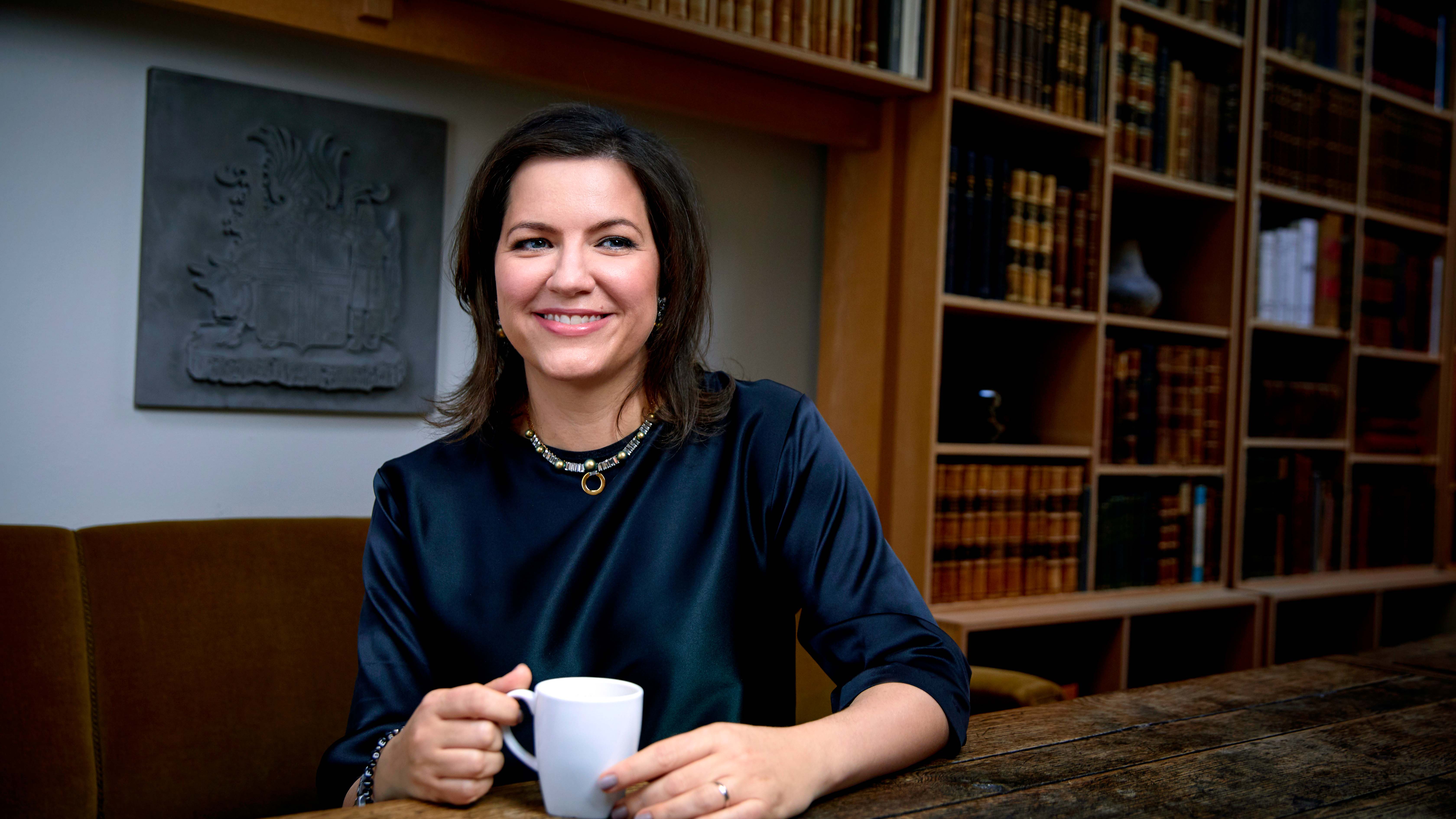
The SpeciaList
Icelandic First Lady Eliza Reid grew up on a farm in Canada's Ottawa Valley and studied history at Oxford University before moving to Iceland, where she was a freelance writer for various Icelandic publications and the editor of Icelandair Stopover in-flight magazine. She is also the author of Secrets of the Sprakkar: Iceland's Extraordinary Women and How They Are Changing the World (2020). Her first novel will be published in 2025.
It isn't often that someone moves abroad and ends up helping to shape the nation. But that's what happened after Eliza Reid, a Canadian graduate student at Oxford University, won a raffle for a date with a fellow student – future Icelandic President Guðni Jóhannesson. Subsequent visits to the spellbindingly beautiful island – and an engagement – led to a permanent move in 2003. Since then, First Lady Reid has worked to highlight the rugged beauty and unique culture of Iceland to the outside world via prose – her own, as a writer for Icelandic travel publications, and through promoting Icelandic literature overseas.
"The country has changed a lot in the last 20 years," says Reid, who served as a UN Special Ambassador for Tourism and speaks Icelandic fluently. "When I first started visiting [in 1999], it was considered much more distant… but we've seen an increase in tourists from Spain, Italy and places like that because when you're taking a summer break in August, you'd probably like to come to Iceland where there might be a drizzly rain and it's 9C."
Iceland is cool, literally and figuratively – with summer highs averaging at 13C and a Viking past, lush with sagas and myths. Reykjavík, the capital, is home to two-thirds of the island's population, excellent cultural events and a rapidly evolving culinary scene. Outside the capital, the country teems with hot springs, ethereal geyser-and-volcano landscapes and close-knit towns.
"It's a very family-friendly society," says Reid, a mother of four. "It's very safe. It's a wonderful place for young children to grow up. There's very low pollution, so the air is very clean; kids walk to school by themselves."
But something Reid wishes people knew about Iceland? "It's closer than you think," she says.
Here are First Lady Reid's favourite ways to enjoy her cool home nation.
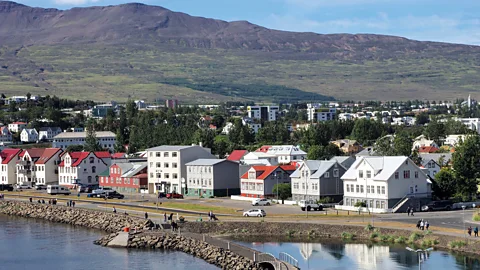 Alamy
Alamy1. Best base: Reykjavík or Akureyri
Many visitors to Iceland tend to base themselves in the capital, planning to explore the entire country in a weekend – a plan Reid calls "overly ambitious".
Tip
"Beware the weather," warns Reid. "In Iceland, the weather dictates a lot. So, you need to research weather forecasts and be prepared – especially in the winter months – to adapt your plans because of inclement weather. The outdoor nature is really popular, but you have to dress for the weather."
"It's a bigger island than people might think," she says. "One of the tips I always give is not to try to do too much, geographically."
Instead, Reid recommends picking a single base. "Reykjavík has the most infrastructure, the most restaurants, the most cultural offerings," she says. "The downside, of course, it has the most tourists. Iceland is known as well for its natural wonders, so it's nice to experience the countryside."
Reid notes that most people fly into Reykjavík, but there are also winter flights direct from the UK to Akureyri in the north, Iceland's second city. "It would be less busy than the capital area," she says. "And there's great skiing, good Northern Lights and whale watching. There's a town that's an hour's drive away that's the best-known centre for whale watching called Húsavík."
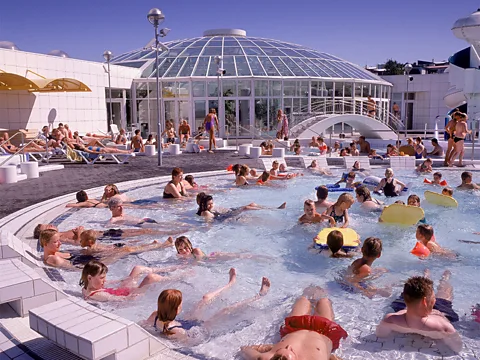 Alamy
Alamy2. Best for experiencing daily life: public swimming pools
Bar none, Reid says the most Icelandic of all Icelandic daily activities is hitting a local outdoor swimming pool. "We have many outdoor geothermal swimming pools," she says. "It's a very authentic way to get to know the locals."
There are more than 120 swimming pools in Iceland (18 in Reid's hometown of Reykjavík); each with their own look and feel, like Árbæjarlaug Swimming Pool, just outside Reykjavík overlooking the idyllic Elliðaárdalur Valley or Akureyri's family-friendly Akureyrar Swimming Pool home to the longest water slide in Iceland. Icelandic swimming pools feature cooler swimming pools (35C), hot tubs (44C) called "hot pots" and often saunas and steam rooms.
"It's a soup of humanity there," says Reid. "It's the great equaliser. You're all sitting there in a bathing suit and you might be next to a politician or a preschool teacher or a plumber or a tourist. The stereotype goes that if you're in Paris and you want to see people, you go to a cafe. If you're in the UK, you go to a pub. Iceland, you go to a swimming pool."
Pool etiquette
"There's quite a strict shower regimen," Reid says. "It's gender segregated, and you have to shower in the nude before you put on your bathing suit. There's not a lot of chlorine in the water."
After showering and donning their suits, bathers may enjoy the pools, but upon finishing their swim, they must shower again. "Only after you're dried off do you go back to the dry area and get dressed," says Reid. "It would be very bad form to walk from the shower to the locker when you're dripping wet water all over the floor."
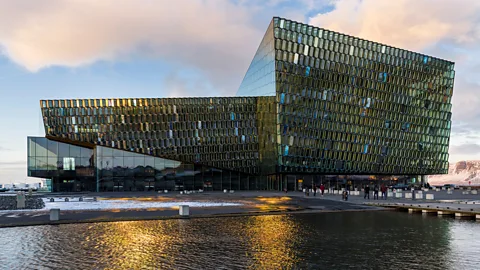 Alamy
Alamy3. Best cultural experience: Icelandic literature, music festivals and Fishermen's Day
"Iceland is a really culturally rich country," says Reid. "Especially given the small population" of just 382,000.
Music lovers, for instance, will be spoiled for choice at the Harpa Concert Hall in Reykjavík and Hof, its smaller counterpart in Akureyri. "There's always music festivals, cultural festivals and museum nights that people can check out," says Reid.
Reid is also a proud supporter of Iceland's literary culture. "Reykjavík is a Unesco City of Literature," she says. Apart from regular literary happenings, like the biennial Reykjavík International Literature Festival and the Reykjavík City Library's literary walking tours, "poetry benches" throughout town are fitted with QR codes that, when scanned, will prompt a reading of Icelandic poetry.
For traditional Icelandic events, Reid cites Fishermen's Day, an annual festival held the first weekend of June commemorating Iceland's seafaring culture with concerts, boat rides and fishing games. "Especially in harbour towns," says Reid. "You can go to different harbours and sometimes – my kids always like this – they display huge crates of ice and fish that have been caught for kids to see what sea creatures look like; little sharks or things that have been trawled up in the nets."
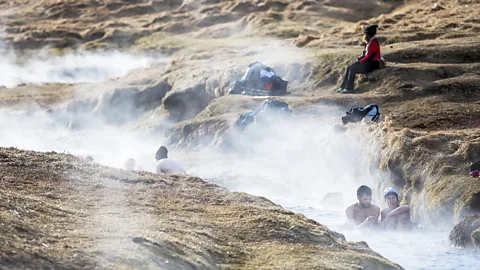 Getty Images
Getty Images4. Best outdoor experience: Rekyjadalur Hike and Hot River
Iceland is famous for its volcanic landscapes. "Of course, the tourist experience is going up on a glacier," says Reid. "Walking along these black-sand beaches. You can also go on boats and fish [for "Viking sushi" (scallops and sea urchins)] and eat it and you can go on an ATV and go down inside a volcano."
But for a true Icelandic outdoor experience, Reid recommends swimming outdoors. "There's a town called Hveragerði which is a 45-minute drive from Reykjavík that has smoky valleys where you can walk up and just sit in a hot spring."
The Reykjadalur Valley – fed by the Hengill volcano – is filled with steamy hot springs and mud pools that can be reached via a brisk 7km hike from the area's car park, passing the Djúpagilsfoss waterfall and the Djúpagil canyon. The site can be smelled before it's seen, thanks to the notoriously "rotton egg" smell of sulphur in the water, but the experience is nonetheless magical. "The water is a bit like a cocoon that envelops you," says Reid. "And then you don't mind if your face is chilly because you're warm and toasty inside this nice clean water. And when you're in the countryside, you really notice that very oxygen-rich air."
Practice caution when approaching these swimming spots – unlike Iceland's iconic Blue Lagoon, they're not outfitted for tourism. "You're just going on a hike," says Reid. "Then you change into a bathing suit and sit in a creek. Use your common sense. There's structured path but there's no admission or people who work there."
 Alamy
Alamy5. Best culinary experience: farm-to-table lamb, fish and skyr
"I don't want to set expectations," says Reid. "But I'd imagine that [visitors] are very pleasantly surprised by the food."
Tip
"Drink the tap water," says Reid. "It's the best tap water in the world. It's fantastic. It comes from our natural springs in the earth. It's hardly treated at all. No local would buy bottled water – ever."
Once confined to the capital, Iceland's culinary scene is now thriving. "Twenty years ago, you couldn't find nice food outside the city and now you can," says Reid. "There are places around the country that are getting Michelin recommendations."
Iceland's remote location has lent itself beautifully to the farm-to-table movement. "It suits Iceland really well," says Reid. "We have sustainably caught fish. There's great langoustine here. Our lamb is also very well known because it's free range. If you eat meat, lamb is the best way to go."
Classic Icelandic dishes include plokkfiskur – "a dish with white fish and potatoes, like a casserole" – and kjötsúpais, a meat soup with lamb, carrots and turnips. "I usually get the fish of the day," says Reid. "And skyr for dessert. Skyr is our local [yoghurt-like cheese] product. It's fat-free and very high in protein."
For a casual bite, try a pylsa, an Icelandic-style hot dog, made with lamb. "There's hotdog stands, you can get them at gas stations," says Reid. "You can choose mustard, ketchup, remoulade, fresh chopped onions or fried onions. You can order one with everything or choose how you want it." She adds: "I get mine with mustard only and fried onions."
BBC Travel's The SpeciaList is a series of guides to popular and emerging destinations around the world, as seen through the eyes of local experts and tastemakers.
--
If you liked this story, sign up for The Essential List newsletter – a handpicked selection of features, videos and can't-miss news, delivered to your inbox twice a week.
